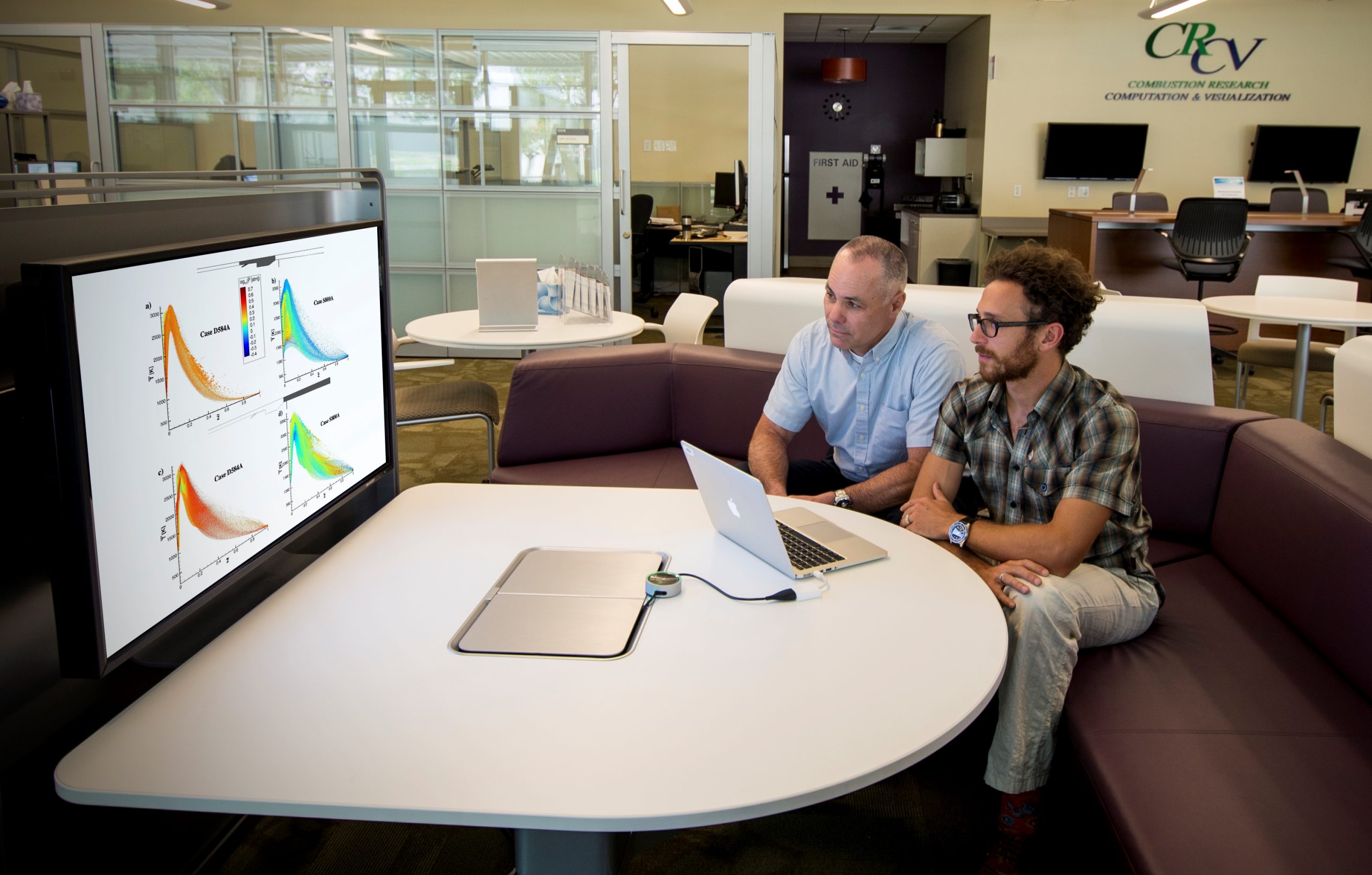Paper focuses on scramjet engines used for supersonic flight
LIVERMORE, Calif. — The American Institute of Aeronautics and Astronautics (AIAA) has recognized Sandia National Laboratories researchers Joe Oefelein and Guilhem Lacaze with a best paper award for their work on scramjet engine simulations.

The paper, “A Priori Analysis of Flamelet-Based Modeling for a Dual-Mode Scramjet Combustor,” was a result of collaborations with Jesse Quinlan and James McDaniel from the University of Virginia and Tomasz Drozda from NASA’s Langley Research Center. The award was presented by the AIAA High Speed Air Breathing Propulsion Technical Committee for accomplishment in the arts, sciences and technology of air breathing propulsion systems.
The paper presents a detailed analysis of combustion regimes in a scramjet, an engine that operates at super- to hypersonic speed and will be used in the future for military, point-to-point transport and access-to-space applications.
“The results presented in the paper are an excellent example of how collaborative teams across institutions can combine their expertise to provide new knowledge supporting the development of predictive combustion models for these systems,” Oefelein said.
The paper showed that both premixed and non-premixed combustion regimes contributed comparably to heat release in the studied case. The authors also demonstrated that using a typical “flamelet” modeling approach for the combustion process could significantly simplify the computational cost of such simulations.
The choice of models to study combustion regimes in a scramjet is crucial as it directly impacts the global accuracy of simulations, the authors said. Currently, most combustion models are developed for a specific combustion regime, and don’t work well across regimes. Thus, it is important to identify the broader range of regimes present. If the wrong model is used, numerical predictions will be incorrect and efforts to develop and optimize the design of the scramjet system will go astray.
“Because of the extreme velocities, experiments are rare and limited, that’s why we do simulations of those systems to better understand how to optimize them,” Lacaze said. “To perform those simulations we need to use models to accurately represent the flame, and our paper shows which approach is the most relevant and why.”
The study will help define the best simulation techniques needed to optimize future scramjets. Improved numerical accuracy at lower cost should help designers explore the key design attributes required for breakthroughs in supersonic engines.
The work also has helped establish new funding for Sandia through an award from the Defense Advanced Research Projects Agency (DARPA) involving uncertainty quantification of scramjet combustion. “We anticipate many future collaborative activities with Jesse, Jim and Tom,” Oefelein said.
This work fits into the philosophy of Sandia’s Combustion Research Facility where simulations complement experiments and bring key insights to improve real engines.
The AIAA is the largest aerospace professional society in the world, serving a diverse range of more than 30,000 individual members from 88 countries and 95 corporate members. AIAA’s mission is to inspire and advance the future of aerospace for the benefit of humanity.